Pablo Picasso When Did Pablo Picasso Start Mackeing Art
RALPH GATTI/AFP via Getty Images
Pablo Picasso: The life story you may not know
Pablo Picasso was an unrivaled titan of 20th-century art. He influenced and collaborated with such fellow artistic geniuses equally Henri Matisse and Georges Braque, and the works of his Blue Menses and his Rose Menses are familiar to fifty-fifty the most casual museum-goer.
In politics, Picasso took an unwavering stand against fascism in his homeland. After a visit in 1934, he vowed not to return to Spain so long as the dictator General Francisco Franco was alive, and he never went home once more. In joining the French Communist Party, he alleged: "I have always been an exile, now I am one no longer; until the time when Spain may finally receive me, the French Communist Party has opened its artillery to me."
His behemothic masterpiece "Guernica" makes a stronger case against war than many a written discussion or argument. Less well known is Picasso's verse, an art form in which he immersed himself before the Spanish Ceremonious State of war broke out so securely affected him. He penned plays as well, and he created stage sets and wardrobe costumes for ballet productions in Paris.
With so many facets to Picasso'south enormous creativity and profound influence, Stacker compiled a listing of events and facts from his life that you may not know, drawing from historical chronicles, museum archives, biographies, and articles in the media.
You may also like: Josephine Baker: The life story yous may non know
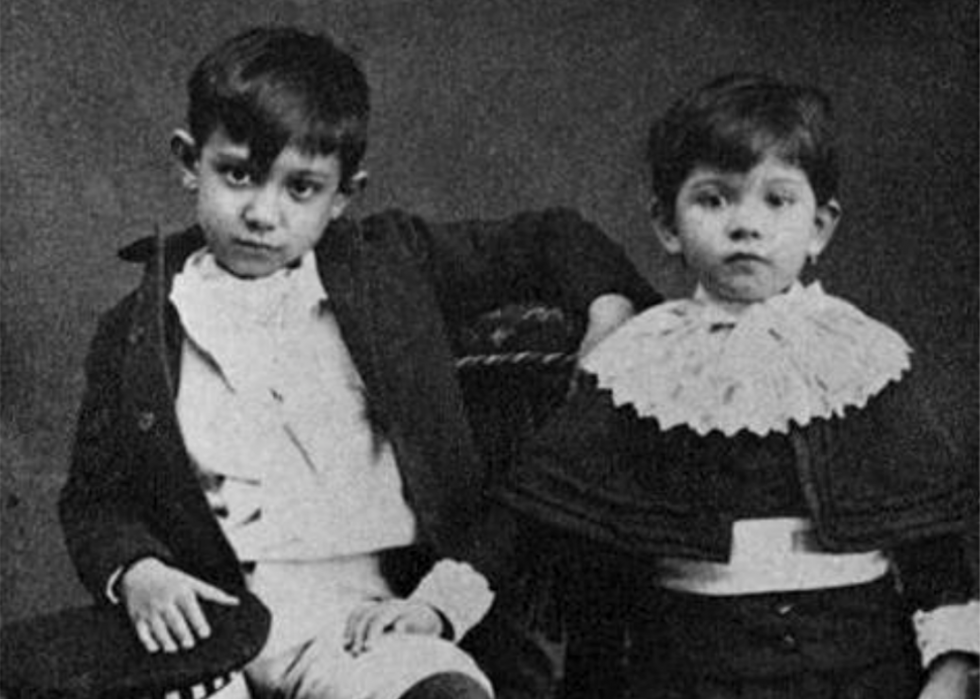
1 / 25
Public Domain // Wikimedia Commons
1881: Born in Malaga, Spain
Pablo Picasso was born in Málaga, Spain, to María Picasso López and José Ruiz Blasco. His male parent was a painter by trade, making his living painting birds and game animals, equally well every bit working as a fine arts teacher and a local museum curator. Picasso'southward younger sister Delores (called "Lola") was born in 1884; his youngest sister, Conchita, was born in 1888 and died in 1895 from diptheria. At the time of Conchita'due south illness, Picasso (14 at the time) swore he would never paint once more if her life could be spared.
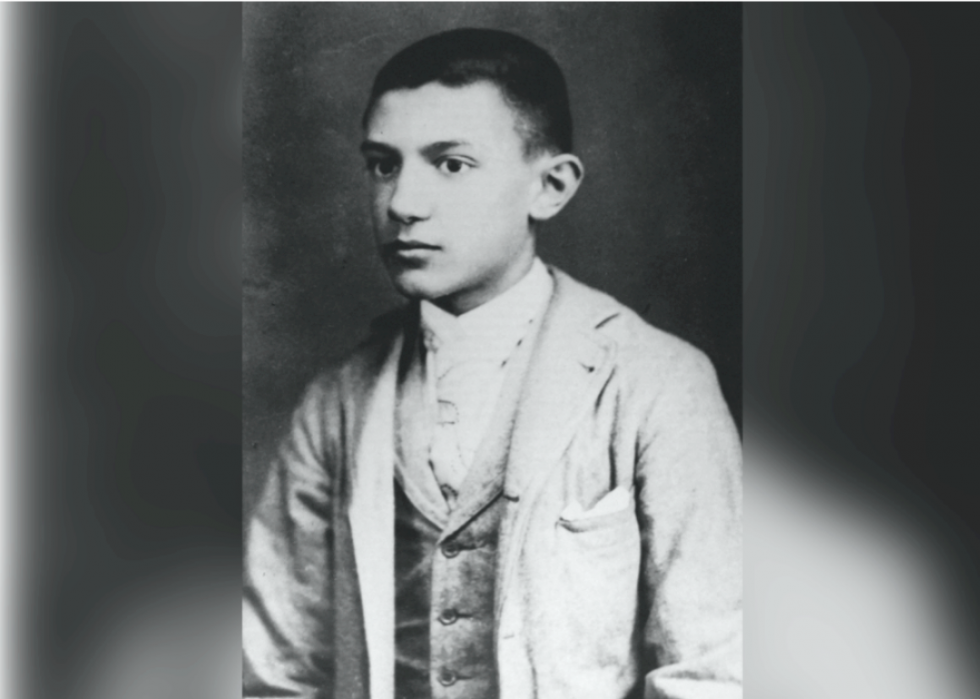
2 / 25
Public Domain // Wikimedia Eatables
1892: Art studies begin
Picasso he began studying art at the Guarda School of Fine Arts in Coru ñ a in 1892. Three years afterward, he and his family moved to Barcelona and the 13-yr-old Picasso enrolled at the Llotja School of Fine Arts in Barcelona. Picasso'south begetter taught at both schools.

3 / 25
Jean Laurent/Museo del Prado // Wikimedia Commons
1897: Visiting the Prado
In Madrid, Picasso began studying at the San Fernando Academy of Fine Arts only did not stay at the school for long. Instead, he frequented the world-famous Prado Museum, founded in 1819, which Picasso had offset visited in 1895. The young artist was peculiarly interested in works by Rembrandt, El Greco, and Francisco Goya that were housed there.
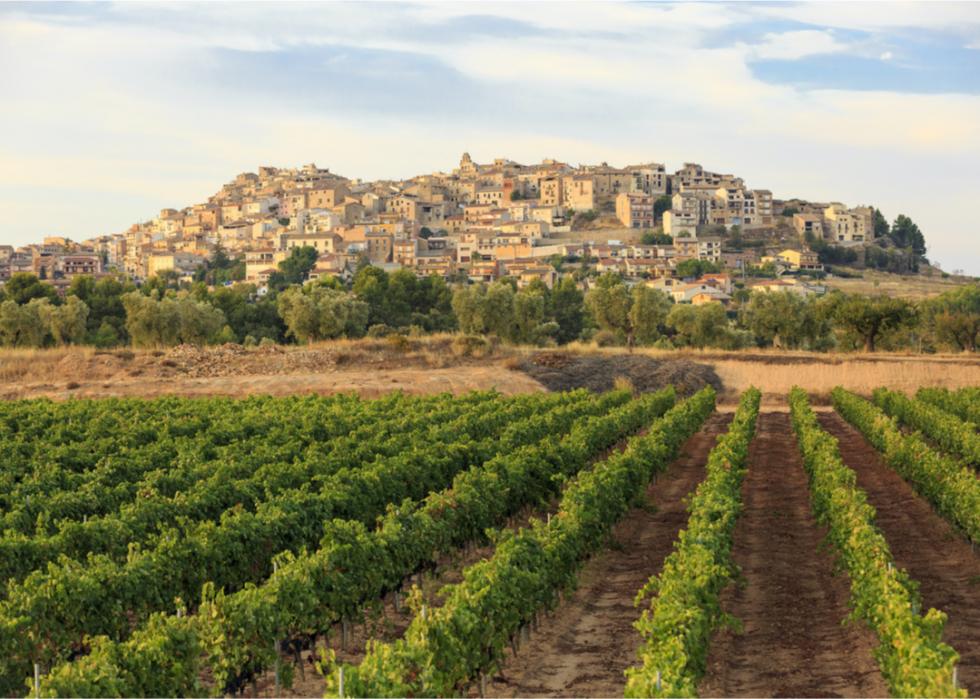
four / 25
David Ortega Baglietto // Shutterstock
1898: A bout with red fever
Picasso came downward with scarlet fever in 1898. When he recovered, he moved back to Barcelona and bankrupt abroad from his art school training—along with his family'south hopes that he would get an academic painter who worked in teaching.
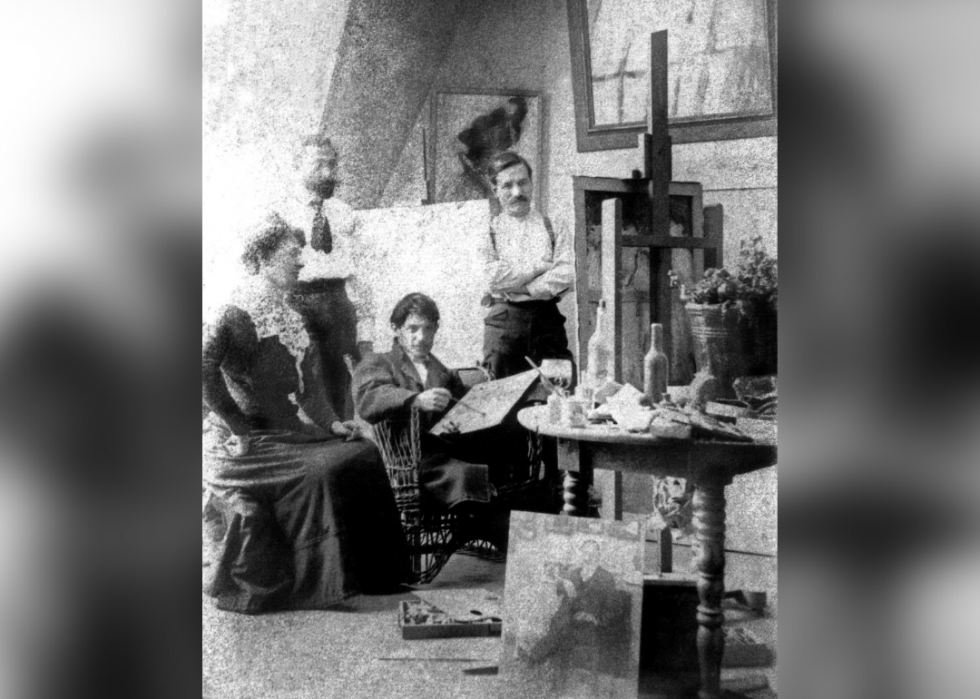
5 / 25
1900: A commencement solo exhibit
Picasso had his first solo exhibit at the Quatre Gats, a buffet in Barcelona. The name, which means "The Four Cats" in English, was a reference to the popular Parisian social club Le Conversation Noir.
You may also like: Marlon Brando: The life story y'all may not know
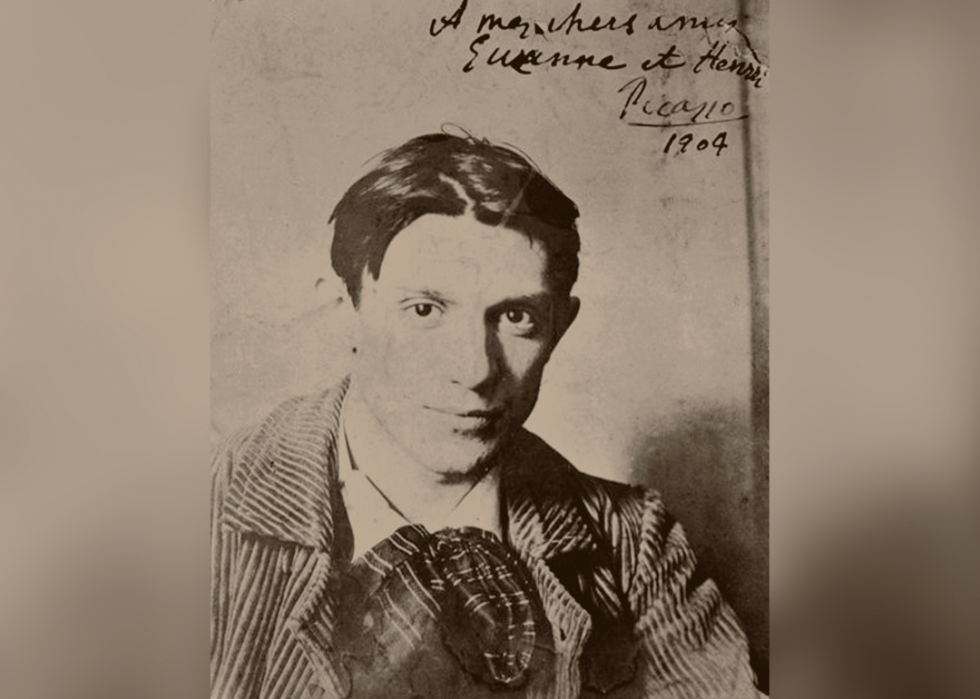
six / 25
Fine Art Images/Heritage Images // Getty Images
1901: Signing art as Picasso
In a move to Madrid, Picasso co-founded a literary magazine called Arte Joven with his friend Francesc d'Assís Soler. Picasso was the art editor for the periodical, which published five editions. The same year, he began moving away from signing his proper name Pablo Ruiz y Picasso and started using his mother's surname of, simply, Picasso.
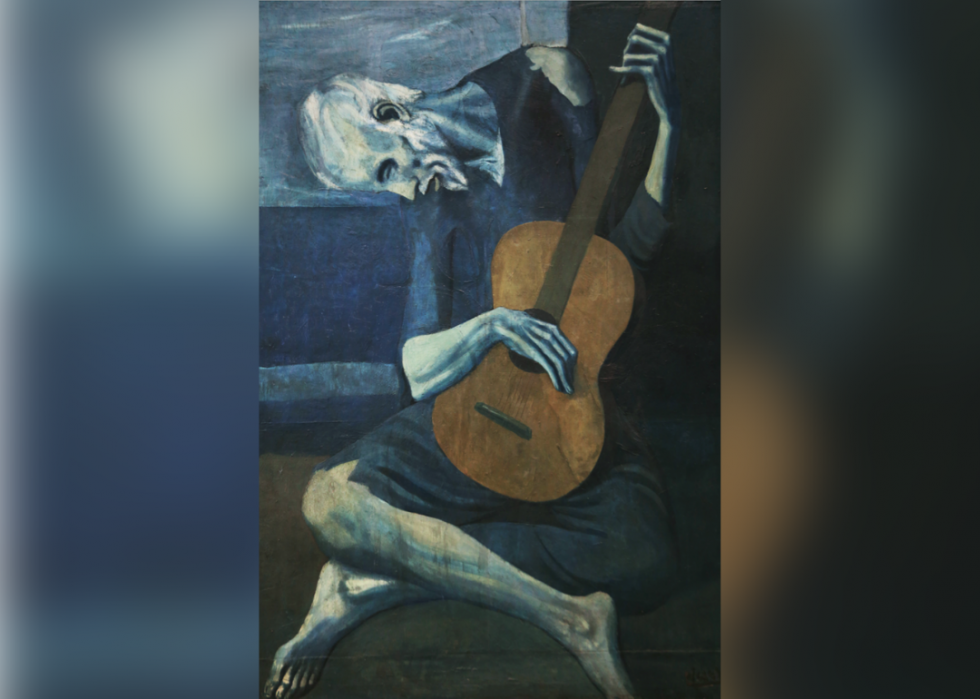
vii / 25
Pablo Picasso // Wikimedia Commons
1901: Dawn of the Blueish Period
1901 marked the beginning of Picasso's Blueish Period, which lasted near three years. He painted somber works, mostly in shades of blue, including "The One-time Guitarist" in 1903, inmates at a women'south prison, blind beggars, and street people. The artist is believed to have been deeply saddened by the suicide of his friend and swain painter and poet Carlos Casagemas following a failed love affair.
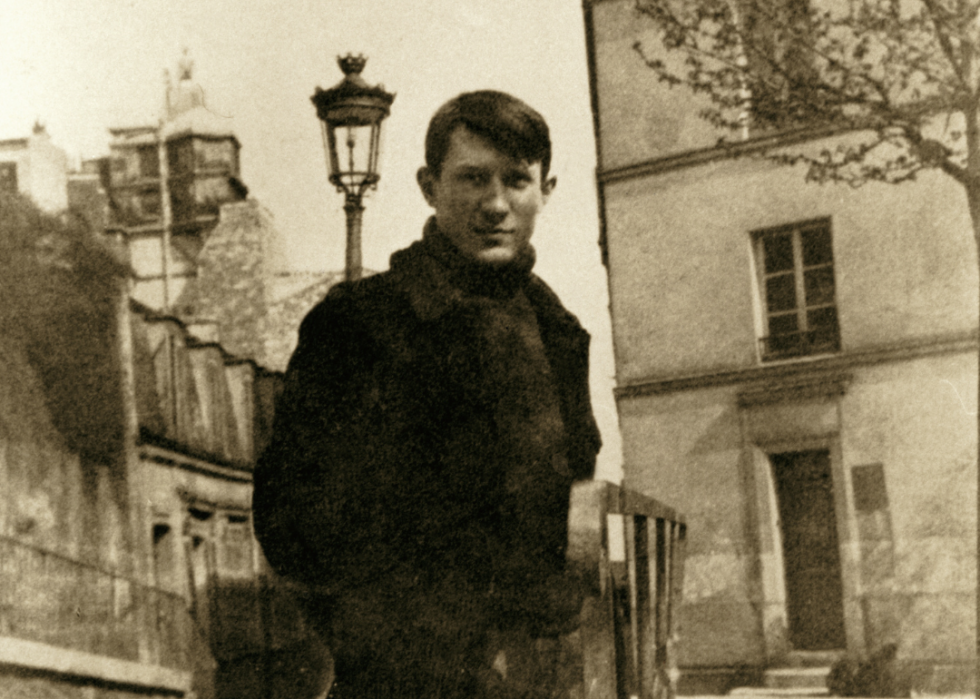
viii / 25
adoc-photos/Corbis via Getty Images
1904: Meeting a companion in Paris
In Paris, Picasso met Fernande Olivier, who became his model and his companion for eight years. She wrote in a memoir that she had been seeking shelter from a rainstorm in a Montmartre edifice used by artists when the Spanish painter invited her into his studio.
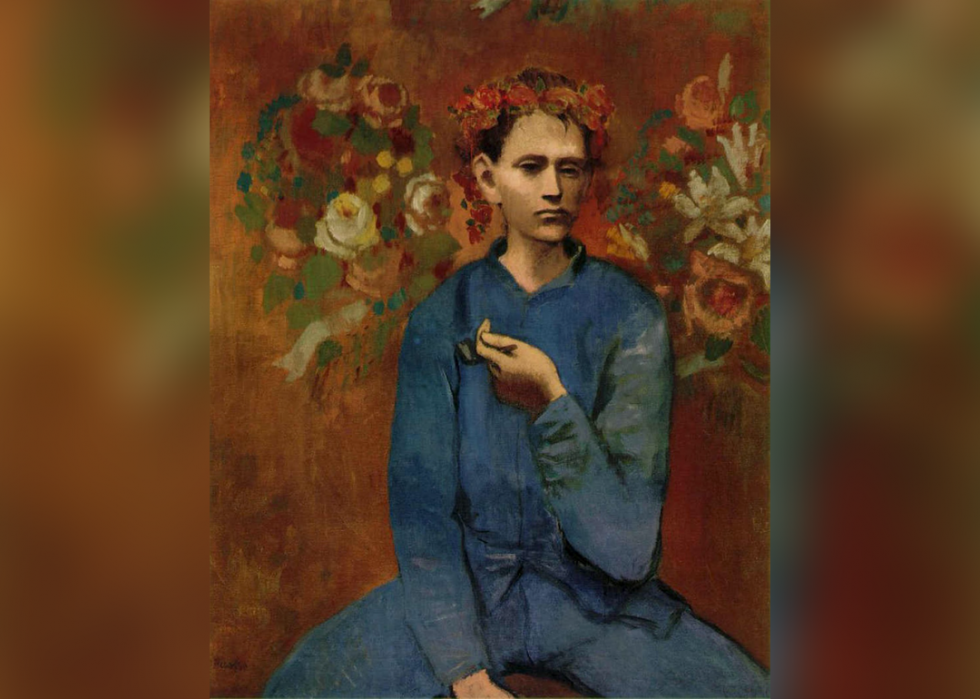
ix / 25
Pablo Picasso // Wikimedia Eatables
1904: The Rose Period begins
Picasso began his and then-chosen Rose Period when he was using an bawdy palette of pink and rose in his paintings. His works grew less pensive than those of the Blue Period. Some of his often-used subjects were clowns, harlequins, and traveling circus performers.
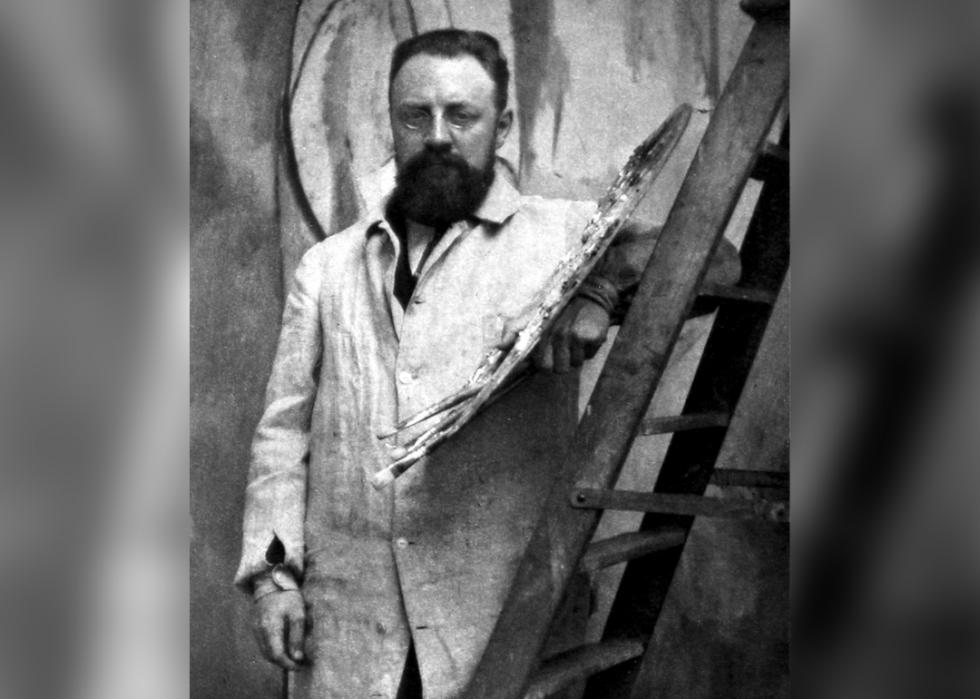
10 / 25
Alvin Langdon Coburn // Wikimedia Eatables
1906: The influence of Matisse
Picasso met Henri Matisse in Paris, the first of a long and circuitous comradery and rivalry. The elder and established Matisse and the brash and experimental Picasso influenced one another in areas such as the use of color and geometry. As a sign of their mutual respect, they collected one another's works.
You may likewise like: Audrey Hepburn: The life story you may not know
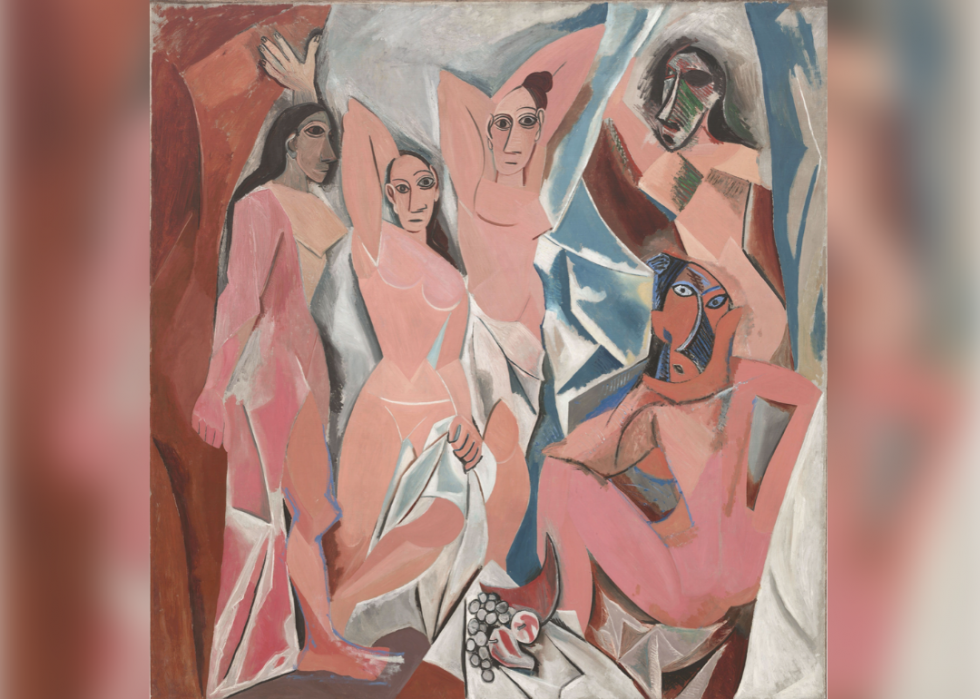
11 / 25
Pablo Picasso // Wikimedia Eatables
1907: A painting evokes controversy
An African influence is axiomatic in Picasso' works starting in 1907, the yr he unveiled i of his most controversial pieces," Les Demoiselles d'Avignon. Its representations of the female body, for which Picasso had made hundreds of sketches and studies over nine years, were criticized as a moral outrage past critics and colleagues alike.
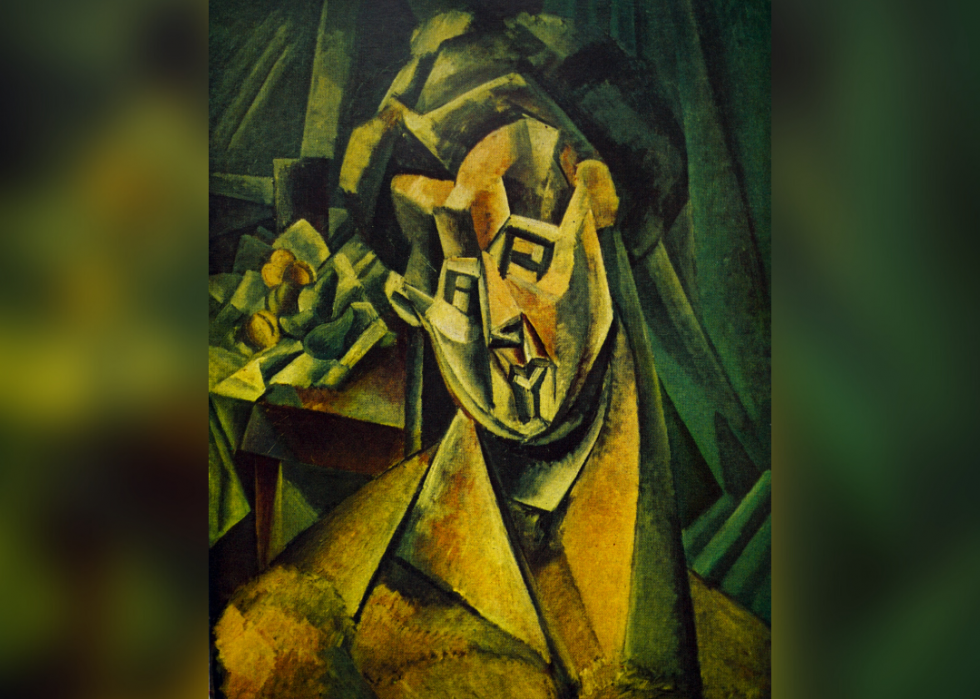
12 / 25
Photograph 12/Universal Images Group via Getty Images
1908-1914: The birth of Cubism
With fellow artist Georges Braque, Picasso created Cubism. Their representations oftentimes portrayed geometric, deconstructed, multiple, and repeated views of an object.
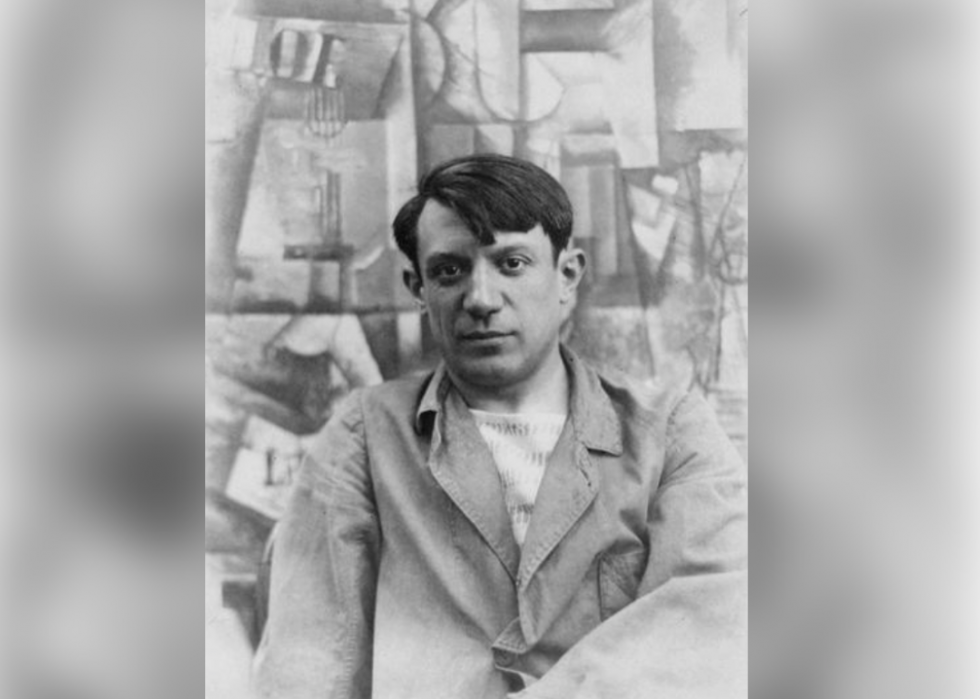
xiii / 25
RMN-G Palais // Wikimedia Commons
1911: Finding love with Eva Gouel
Picasso met and fell in beloved with Eva Gouel in 1911. That year, she posed for his famous painting "Adult female With a Guitar." They remained together until she died in 1915 of tuberculosis.
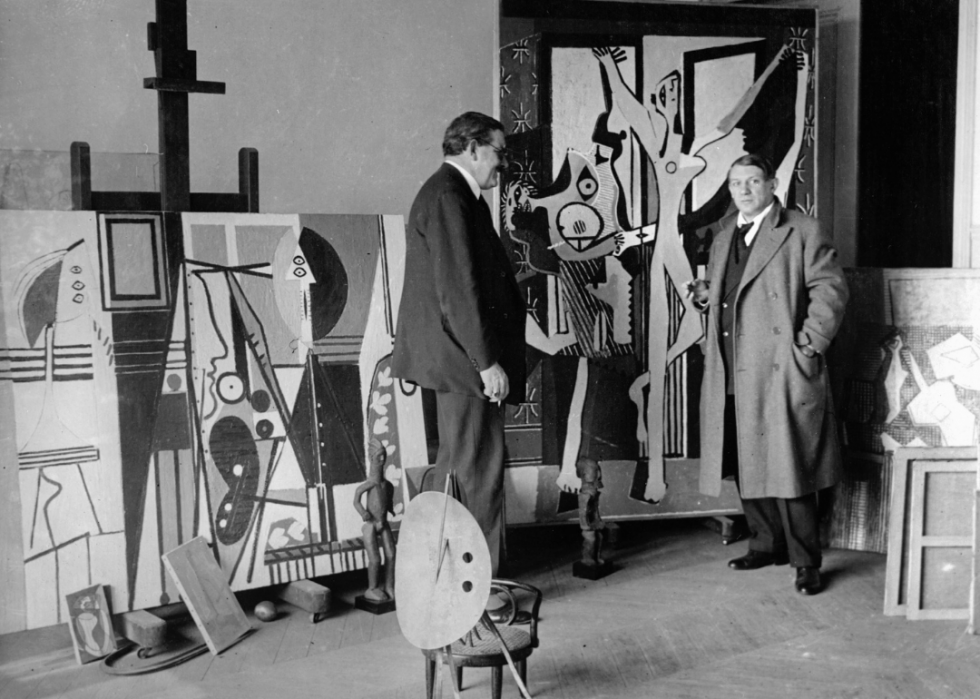
14 / 25
Albert Harlingue/Roger-Viollet // Getty Images
1912: Moving to collage, Synthetic Cubism
Complementing Cubism, Picasso and Braque began making collages, gluing newspaper and other material such as sand onto canvas. This became known every bit Constructed Cubism. An example from this time is Picasso'due south 1914 "Absinthe Glass," which incorporated cast bronze sculpture and painting, with a silver sugar strainer welded to information technology.
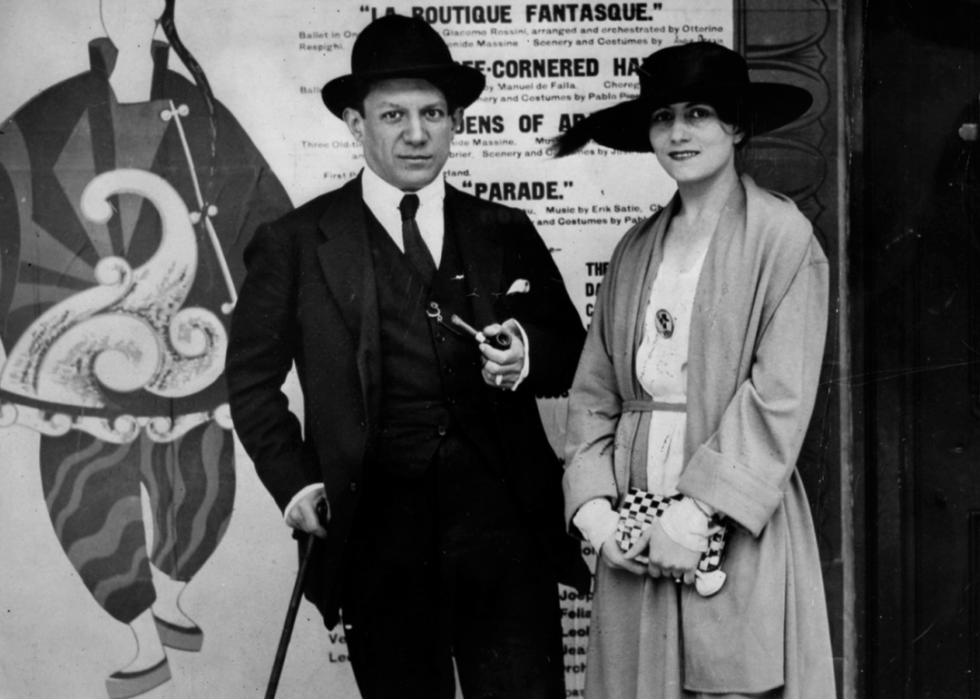
15 / 25
Fine Art Images/Heritage Images // Getty Images
1916: A ballet and a ballerina
Poet Jean Cocteau collaborated with Serge Diaghilev, founder of Ballets Russes, and others to produce the ballet "Parade." Picasso created its sets and costumes. Amidst the dancers was Russian ballerina Olga Khokhlova, who married Picasso in 1918. They had a son named Paulo in 1921. They separated in 1935, merely Picasso refused to agree to a divorce—and requite her half his wealth—so they remained married until her death in 1955.
Yous may besides like: Clint Eastwood: The life story you may not know
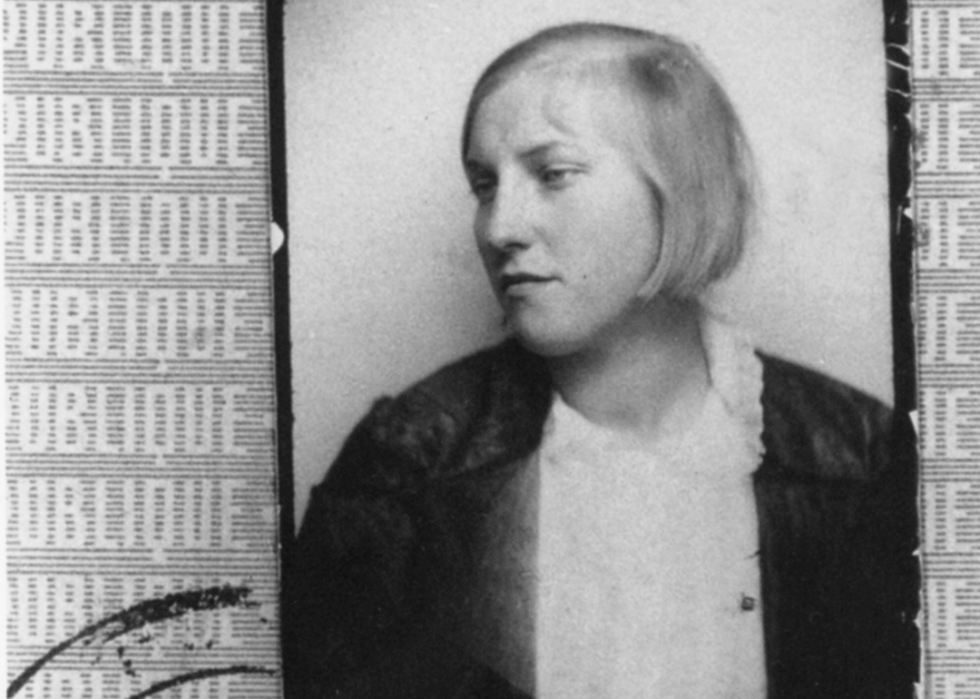
16 / 25
1927: A human relationship with the 'Girl Before a Mirror'
Picasso was 46 when he met Marie-Thérèse, who was 17 at the time. They had a girl Maya in 1935 and remained together until 1936. She was the subject of his 1932 painting "Girl Before a Mirror."
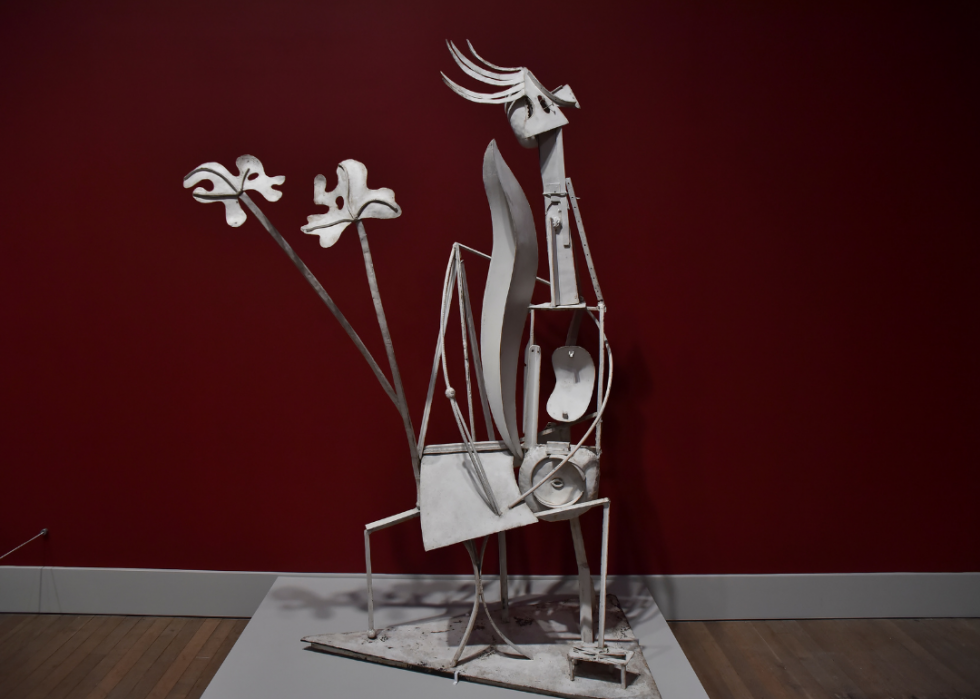
17 / 25
Alberto Pezzali/NurPhoto via Getty Images
1928: Sculpting with metallic, plaster, plant objects
Starting in 1928, Picasso began sculpting with iron and canvas metal and built a sculpture studio in Normandy. He also began sculpting large plaster heads and making works using plant objects.
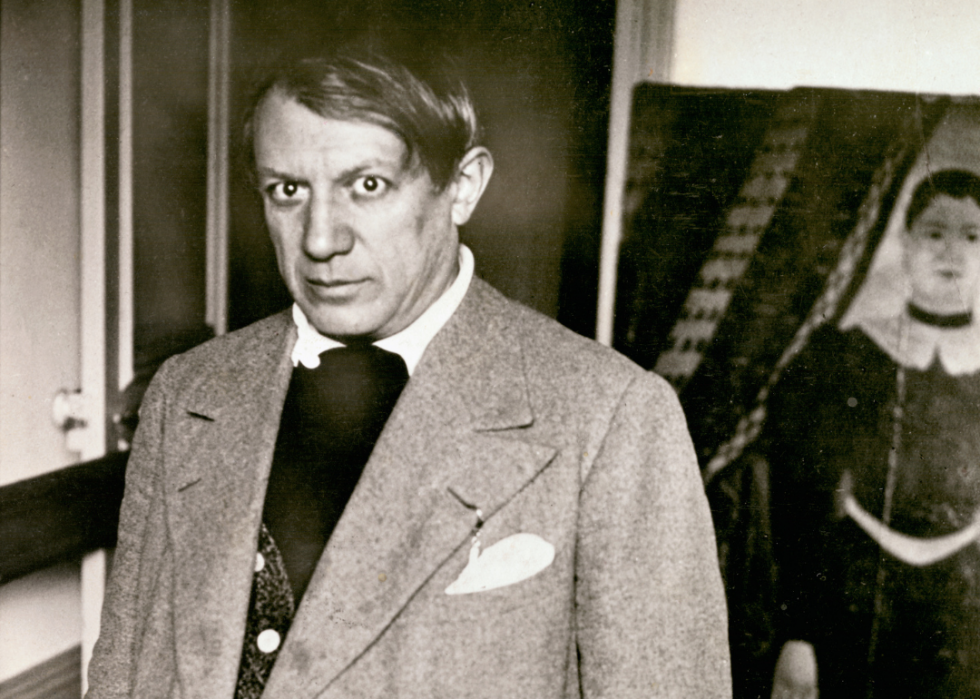
18 / 25
Ron Case/Keystone/Hulton Archive/Getty Images
1935: Switching to verse
Picasso started writing poetry in 1935 and for about a year, he scarcely painted. His poems were published in the art journals Cahiers d'Art and La Gaceta de Arte. In 1941, he wrote a Surrealist play called "Desire Caught by the Tail."
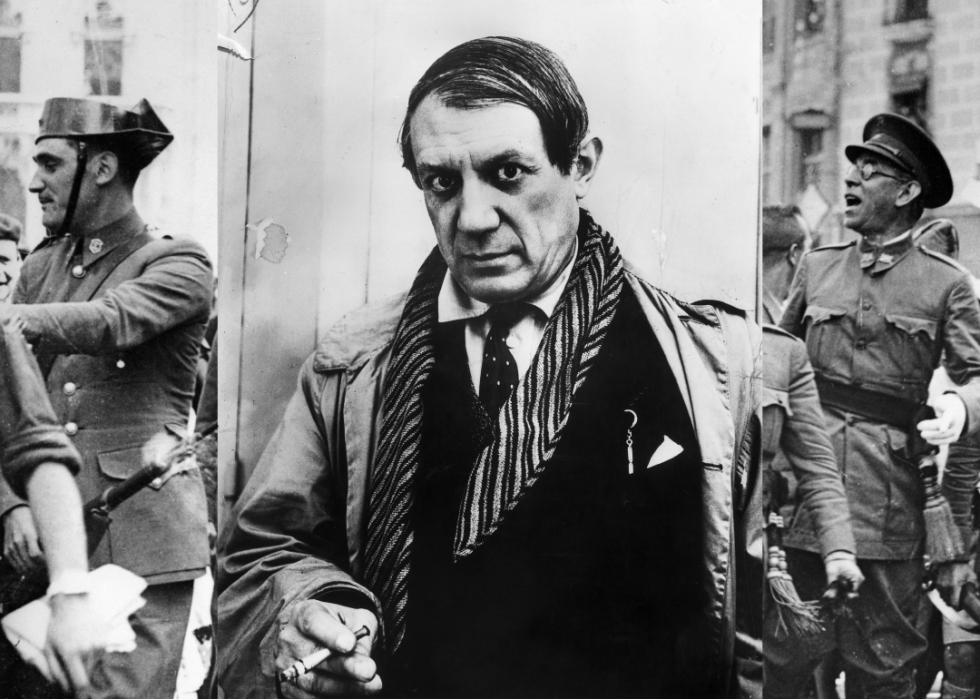
19 / 25
Hulton Archive // Getty Images
1936: Civil war begins in Spain
When the Castilian Civil War began, Picasso sided with the Republicans, who named him honorary head of the Prado. The same year, he became involved with French surrealist photographer Dora Maar.
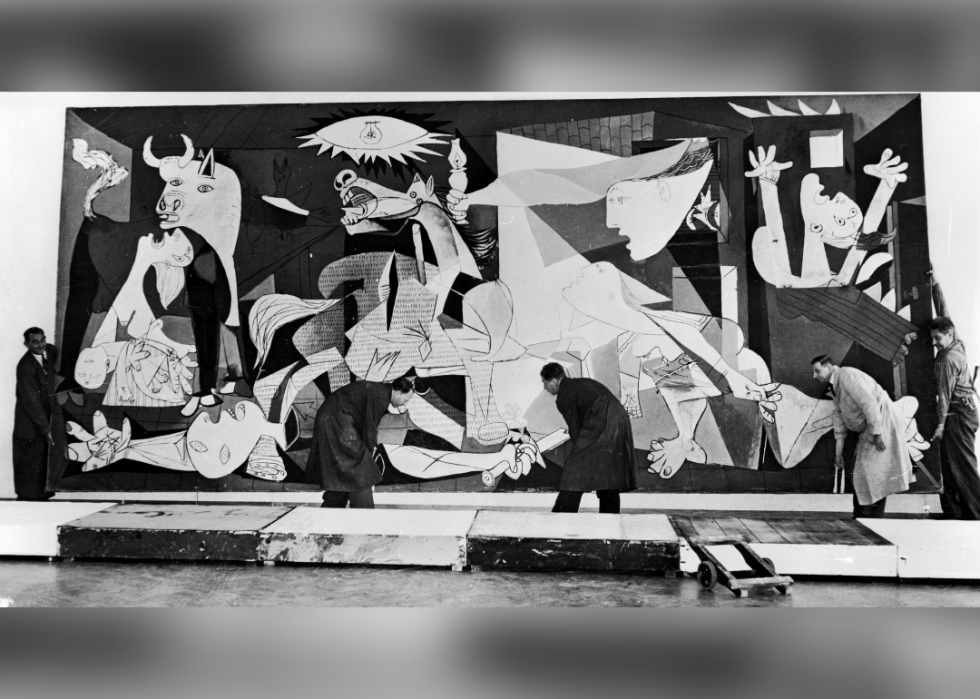
20 / 25
Keystone/Hulton Archive/Getty Images
1937: With 'Guernica,' a condemnation of war
One of Picasso's well-nigh profound and moving works is "Guernica," named for the Basque town bombed by the Fascists in 1937. The massive piece, more than 25 feet wide, came together in about three weeks. Information technology depicts the gruesome tragedies of war: a wounded horse, a fallen soldier, weeping women, and a dead child.
You may also like: Charlie Chaplin: The life story yous may not know
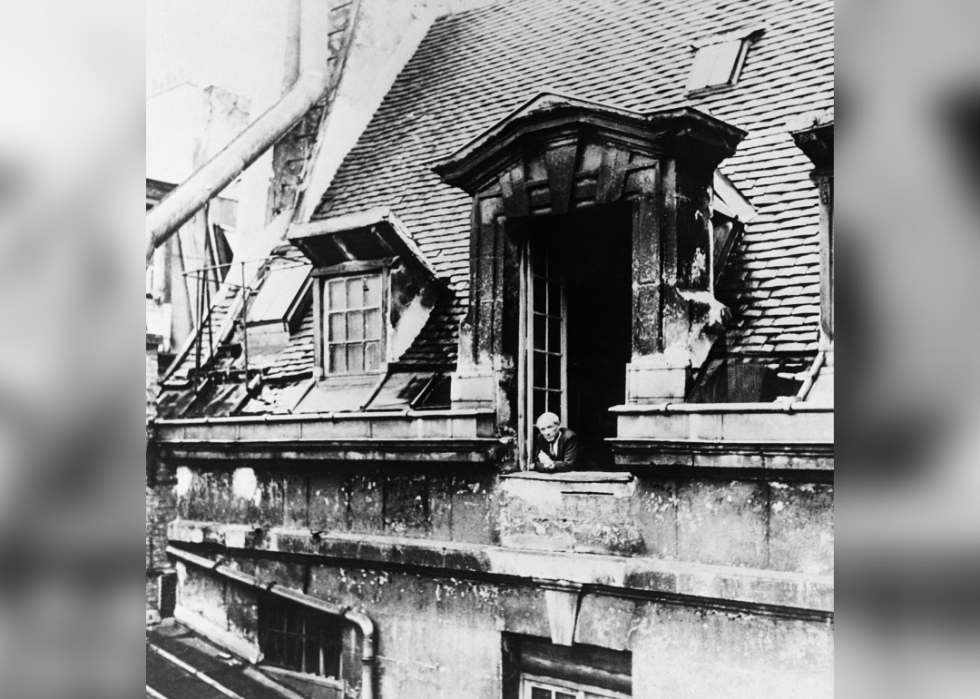
21 / 25
1939: Living in occupied France during WWII
When World War Ii broke out, Picasso opted to remain in Paris. His work was accounted degenerate by the occupying Nazis, and he did not show his fine art in public. He was harassed by the Nazi undercover constabulary merely created several works, some using material smuggled to him past the French Resistance. In return, he assisted resistance fighters by offering them shelter.
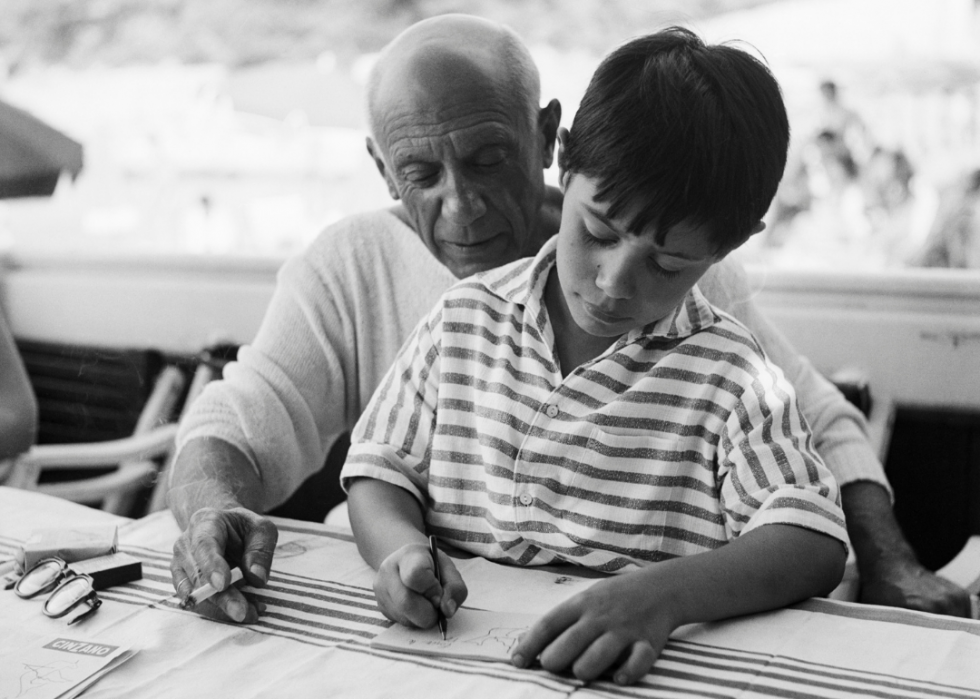
22 / 25
1944: Life after the war
In Paris after Globe State of war Ii, Picasso began a relationship with a young art student named Francoise Gilot. They had two children, Claude in 1947 and Paloma in 1949. Paloma Picasso became an internationally acclaimed jewelry designer.
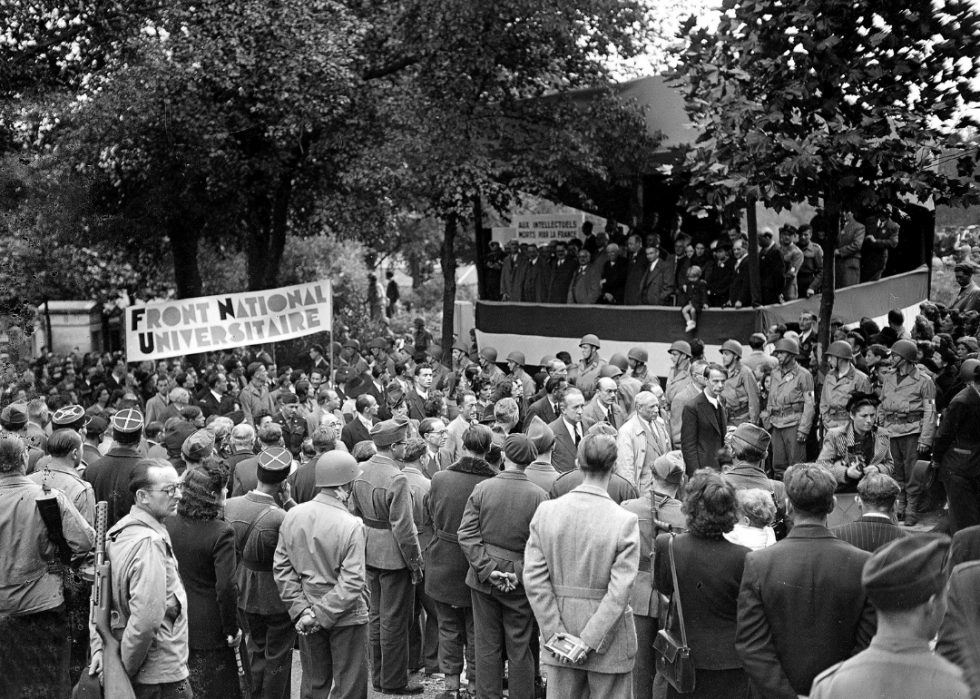
23 / 25
Roger Viollet via Getty Images
1944: Joining the French Communist Party
Picasso in 1944 announced he had joined the French Communist Political party in L'Humanite, a French newspaper. "My membership of the Communist Party is the logical consequence of my whole life, of my whole work," he wrote. "These years of terrible oppression have shown me that I must fight not simply through my art, only with all of myself."
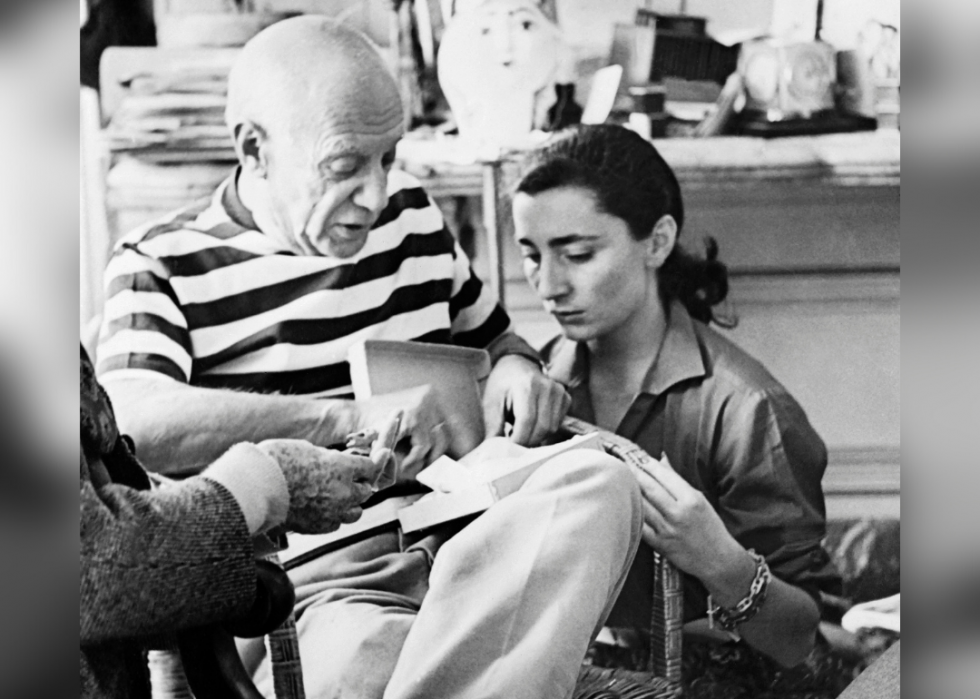
24 / 25
ANDRE VILLERS/AFP via Getty Images
1953: A young muse
Picasso met Jacqueline Roque, who worked at Madoura Pottery where he made ceramics, in 1953 when he was 72 and she was but 26. The two married in 1961. She became his muse, and he created around 400 portraits of her in their fourth dimension together. The two were married for 11 years until his expiry.
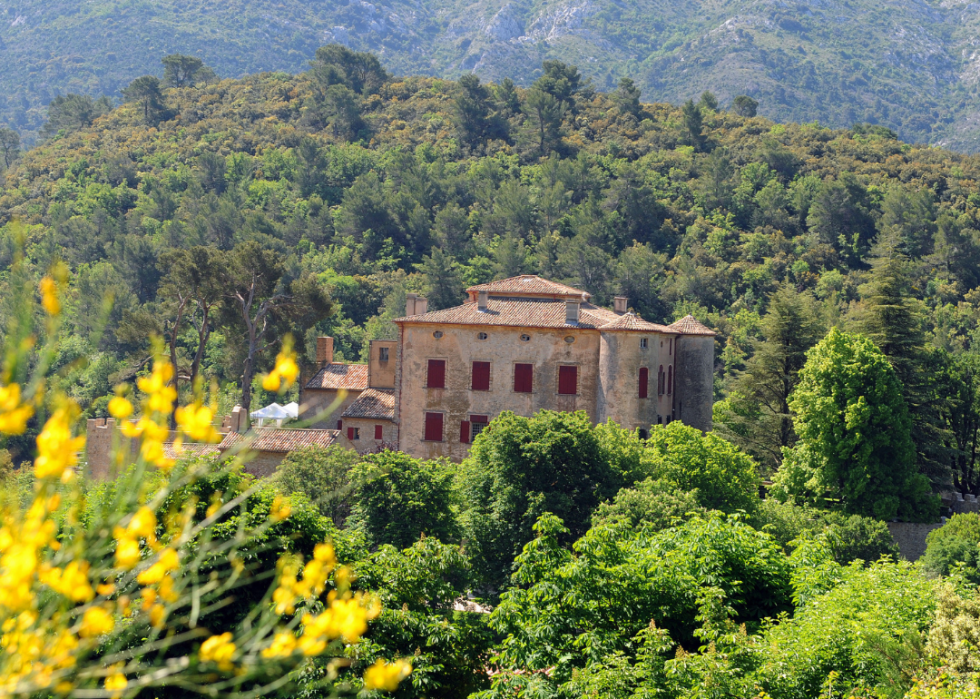
25 / 25
GERARD JULIEN/AFP via Getty Images
1973: Death at age 91
Picasso died at 91 years of age on April 8, 1973, at his villa Notre Dame de Vie. The cause of death was attributed to pulmonary edema and heart failure. He is buried at Château de Vauvenargues , about Aix-en-Provence in France.
Yous may also like: 30 stunning photos from 'The Golden Age of Jazz'
Trending At present
© Stacker 2022. All rights reserved.
marshallahmand1991.blogspot.com
Source: https://stacker.com/stories/12763/pablo-picasso-life-story-you-may-not-know
0 Response to "Pablo Picasso When Did Pablo Picasso Start Mackeing Art"
Post a Comment